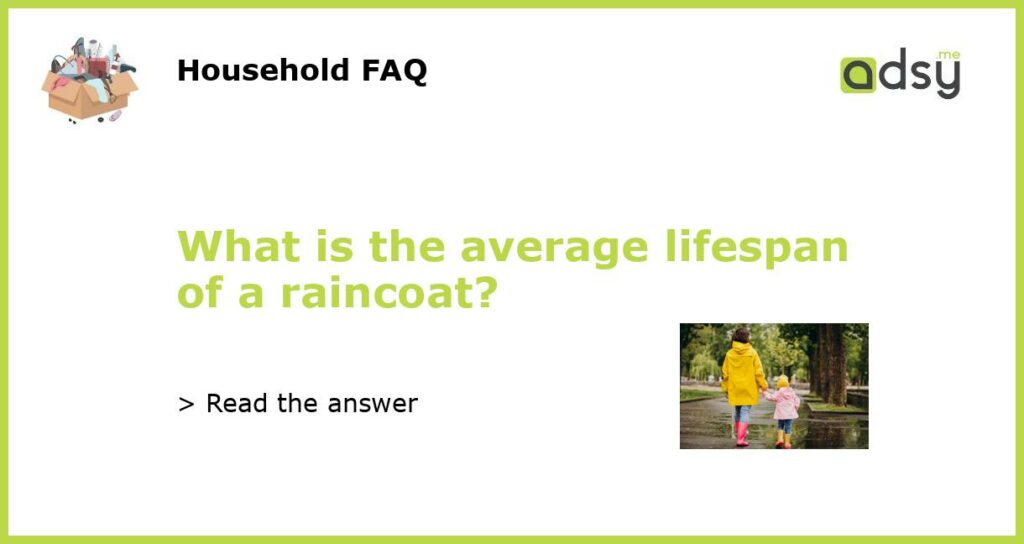Average Lifespan of a Raincoat: Factors that Affect Durability
A raincoat is an essential wardrobe staple that protects us from the elements. But how long does a raincoat actually last? The average lifespan of a raincoat depends on several factors, including the materials used, how often it is worn, and how well it is cared for. In this article, we will explore these factors and provide some tips on how to prolong the lifespan of your raincoat.
Material Quality
The material quality of a raincoat plays a significant role in determining its lifespan. High-quality raincoats are typically made from durable, waterproof materials such as nylon or Gore-Tex. These materials are designed to withstand harsh weather conditions and provide long-lasting protection.
On the other hand, raincoats made from low-quality materials may not offer the same level of durability. They may be more prone to tears, wear and tear, and may not provide effective waterproofing over time. It is essential to invest in a raincoat made from high-quality materials to ensure its longevity.
Frequency of Use
Another factor that affects the lifespan of a raincoat is how often it is worn. If a raincoat is used frequently, it is more likely to experience wear and tear. This is especially true if it is exposed to harsh weather conditions, such as heavy rain or strong winds, on a regular basis.
For individuals who live in regions with frequent rainfall or who engage in outdoor activities often, their raincoats may have a shorter lifespan compared to those who only wear them occasionally. However, it is still possible to extend the lifespan of a raincoat even with frequent use by following proper care and maintenance practices.
Care and Maintenance
Caring for your raincoat is crucial in prolonging its lifespan. Proper maintenance practices can help prevent damage and ensure that the coat remains waterproof. Here are some tips for caring for your raincoat:
- Follow the manufacturer’s instructions for washing and drying your raincoat. Some raincoats may require special care, such as handwashing or air drying.
- Avoid using harsh detergents or fabric softeners, as they can damage the waterproof coating on the raincoat. Instead, use a mild detergent specifically designed for waterproof clothing.
- After each use, hang your raincoat to dry thoroughly before storing it. This helps prevent mold and mildew growth, which can damage the fabric.
- Inspect your raincoat regularly for any signs of wear and tear, such as loose stitching or rips. Address these issues promptly to prevent further damage.
When to Replace a Raincoat
Despite proper care and maintenance, there will come a time when a raincoat needs to be replaced. Signs that indicate it’s time for a new raincoat include:
- Visible signs of wear, such as holes, tears, or fraying fabric, that cannot be repaired.
- Loss of waterproofing. If water starts to penetrate the fabric or if the raincoat no longer repels water effectively, it may be time to invest in a new one.
- The raincoat no longer fits properly or does not provide adequate coverage. A raincoat that is too small or too big may not offer the intended protection.
It is important to replace your raincoat when it no longer serves its purpose. Continuing to use a worn-out raincoat may leave you exposed to the elements and defeat the purpose of wearing one.
The average lifespan of a raincoat depends on various factors, including the material quality, frequency of use, and care and maintenance practices. Raincoats made from high-quality materials and given proper care can last for several years. However, if a raincoat shows signs of wear, loss of waterproofing, or no longer fits properly, it is time to invest in a new one.
By understanding these factors and following the recommended care practices, you can ensure that your raincoat provides reliable protection for a prolonged period of time. So, make sure to invest in a quality raincoat, use it wisely, and take good care of it to get the most out of your investment.






